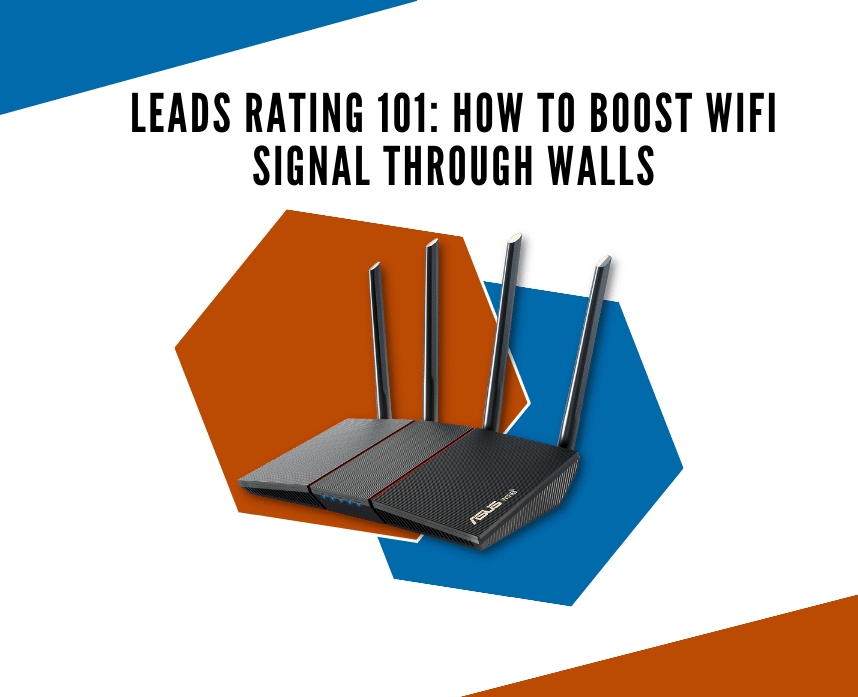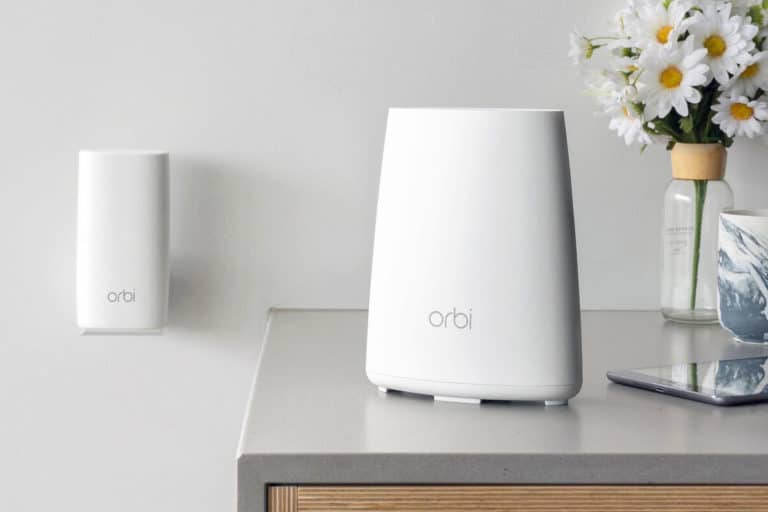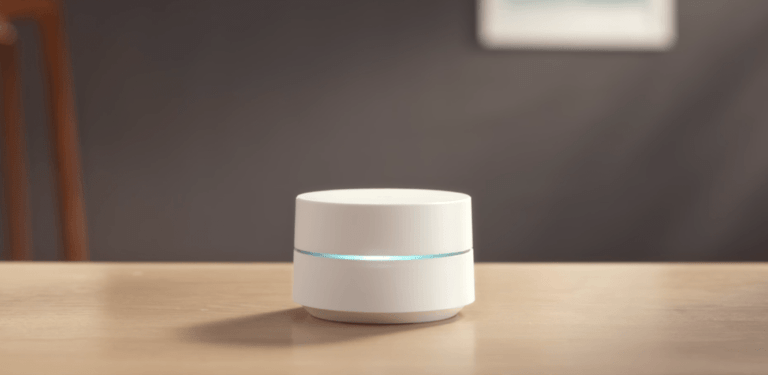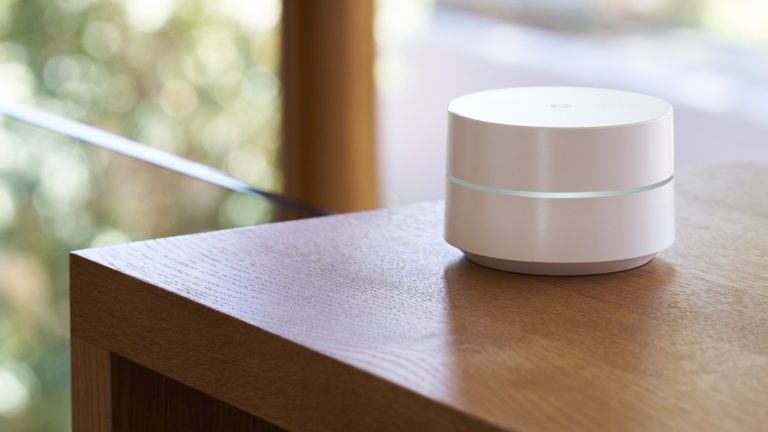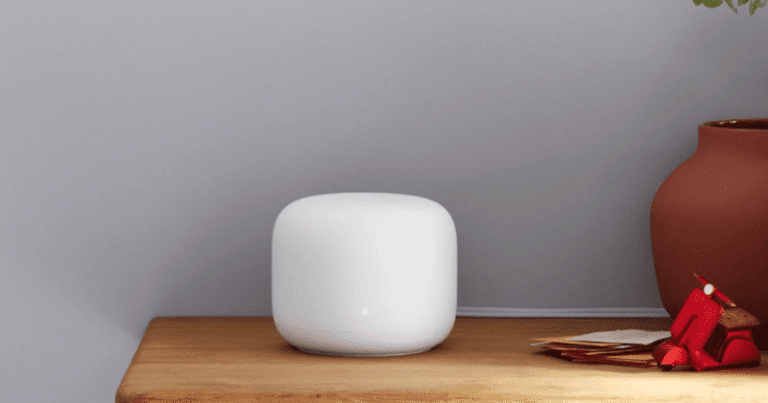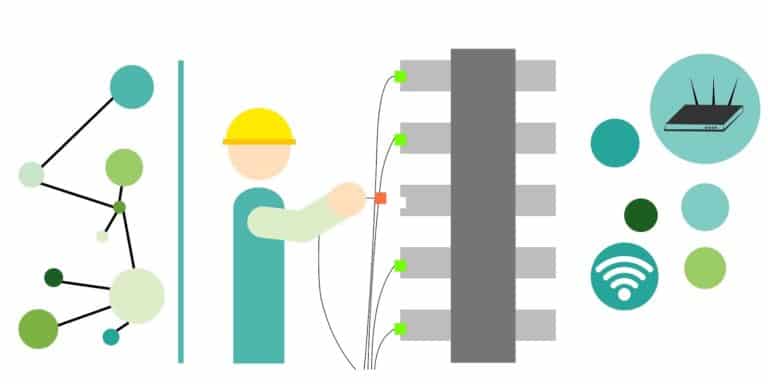Leads Rating 101: How to Boost WiFi Signal Through Walls
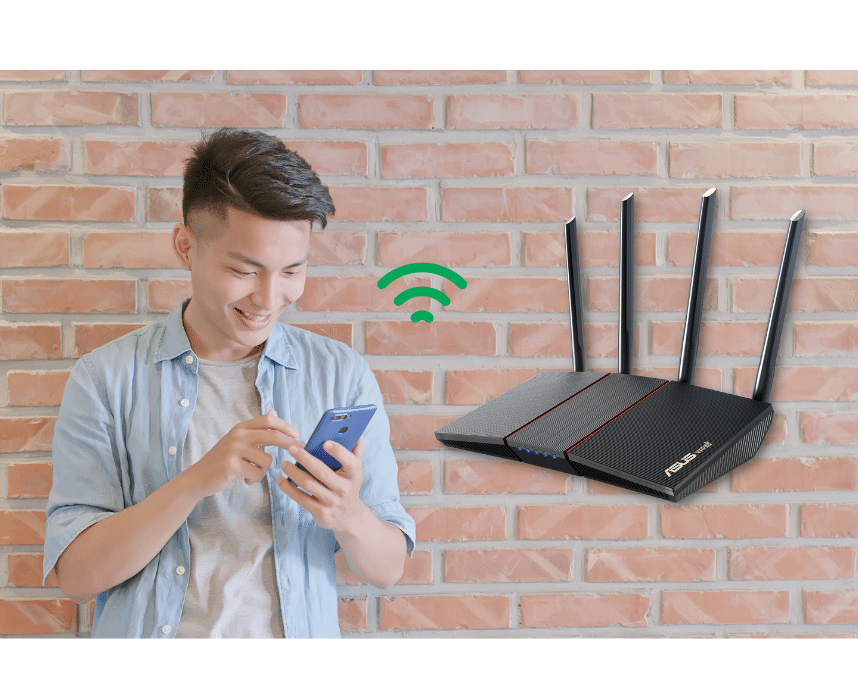
If you’re living in a home with thick walls, going from one room to another without getting disconnected is really frustrating. Luckily there are plenty of ways to amplify internet signals at home. You can upgrade your home network or you can do it for free!
If you’re on a budget, you can change the frequency channels your device is using. But if budget isn’t an issue, then you can set up a mesh WiFi network for better coverage.
That’s not all of it! We’ve compiled different ways for you to improve WiFi signals through walls.
The efficiency of the methods we’ll tell you will depend on your budget, house size, location, and internet plan. Let’s go deeper into the details and see which way works best for you.
Table of Contents
Boost WiFi Signals for Free
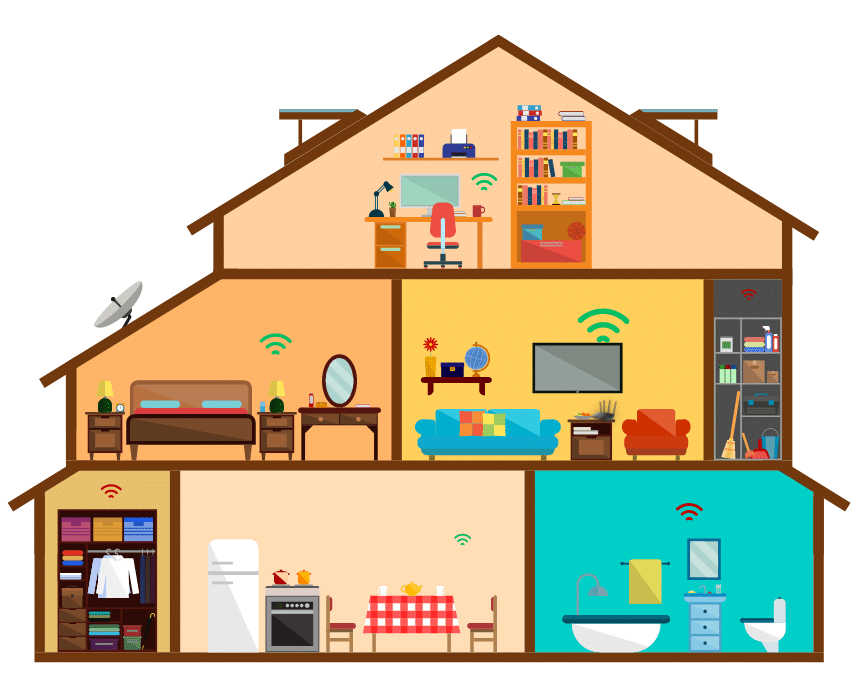
Here are some ways how to boost internet signals without breaking the bank. It’ll cost you almost nothing and all you need to do is tweak a few things at home.
1. Put your router in a different location
Changing your router’s location can make significant changes to your signal at home. WiFi signals slow down when there are plenty of obstructions, so make sure to keep your router away from the following:
- Mirrors
- Glass objects
- Metal objects
- Wooden closets
- Electronic appliances
As much as possible, put your router in a central location, 2 to 3 feet above the ground. If you have a multi-story house, put your router as close to the ceiling as possible.
2. Switch your WiFi frequency
Dual-band and tri-band routers both have 2.4 GHz and 5 GHz frequency bands. The main difference between the two is the 2.4 GHz band works better in penetrating walls and reaching farther places.
That being said, if you’re near the router, you can use the 5 GHz channel. This way you can get faster and higher speeds.
But if you’re a bit far from the router, use the 2.4 GHz band. You may get slower speeds, but it’s definitely more reliable and stable.
It’s important to remember that 2.4 GHz is also used by other devices like your microwaves, baby monitors, smart TV, and Bluetooth devices. Because of that, it’s prone to interference and is relatively slow compared to 5GHz.
You can change to the 2.4 GHz by manually switching to the 2.4 GHz band on your mobile device. Or if your router supports Smart Connect, you can set it up on your router’s admin page.
Smart Connect automatically chooses the best band for your devices. Your router assigns which band should each device use to make sure that it’s getting fast speeds. Plus, you can enjoy the best of both worlds of 2.4 GHz and 5GHz!
3. Keep your firmware up to date
If you’re starting to notice that your router isn’t performing as well as it used to, then it means it’s slowed down by bugs.
You’ll know if the internet speeds are unusually slow, but there’s no problem on the internet service provider’s end.
Updating your firmware fixes these bugs and will also give your home network an internet boost. So, from here now on, checking updates should be a monthly or bi-monthly routine.
You can manually or automatically download firmware updates on your router’s admin portal or management app.
Boost WiFi Signals (Paid Methods)
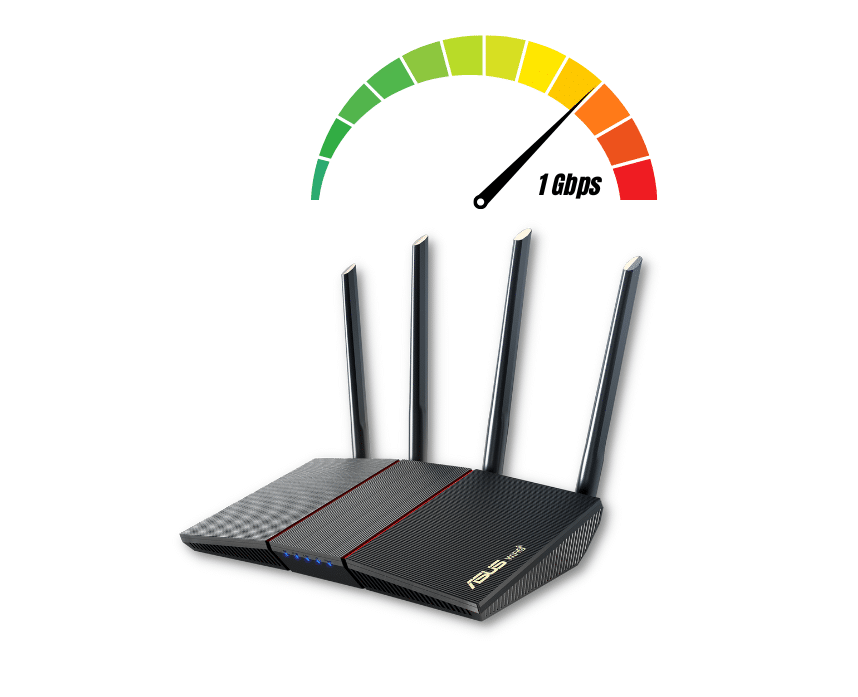
While the methods above work, getting an upgrade is also a long-term solution to this issue. Read on and see the methods fir for you along with our recommended products.
1. Set up a mesh WiFi network
A mesh WiFi network ensures that your home is free from dead zones. It has a router and satellite nodes that work together to boost internet connection altogether.
However, it’s important to note that mesh is different from an extender.
What happens with a mesh is, the router and satellite nodes communicate wirelessly to create a singular network. The router and satellites also automatically assign your device to the mesh that has the best speeds.
This is one of the best pros of a mesh network. You won’t need to jump from one network to the other!
Identify which part of your house needs an extra internet boost, then place a satellite there. So even if you’re in the basement or inside the room, you can still get fast speeds.
There are plenty of mesh brands in the market including:
You can also check out our list of the best mesh WiFi systems to see which one suits your needs.
2. Use a WiFi range extender or repeater
WiFi repeaters and extenders are two different devices but they do share one thing: they’re handy internet boosters.
A WiFi range extender gives you wider wireless coverage. For it to perform better, you can use a direct cable connection. Simply connect the extender to the router using an ethernet cable.
Meanwhile, a WiFi repeater boosts your network’s signal. Both repeaters and extenders are plug-and-play, so setting them up is easy.
We’ve tested a bunch of extenders, and there are plenty of options out there especially extenders for gaming or AT&T users.
If you’re currently an eero user, check out our eero extender review and see if it’s a great addition to your home.
3. Upgrade to a new router
There are a lot of perks to upgrading to a new router. With WiFi 6 and WiFi 6E now implemented, getting a router that supports these WiFi standards will surely give you stronger signals.
If you don’t have an internet plan with 500 Mbps or higher, getting WiFi 5 routers will do.
To make sure that you’re getting the most out of your money, a router should support the following specs and technologies:
- 3×3 MU-MIMO or higher
- Beamforming
- Target Wake Time
- OFDMA
- Smart Connect
We’ve tested different routers throughout the years and there’s something for you. Check out our recommendations for a dual-band router, a tri-band router, or a router for gaming.
4. Switch to a powerline adapter
A powerline adapter lets you connect to your internet through the electrical wirings in your home. It’s a great option if your current plan is below 200 Mbps.
It’s a low-cost way to boost internet speeds at home. However, you must be careful in buying one because some power adapters only work when they’re of the same brand.
Why do walls slow down internet signals?
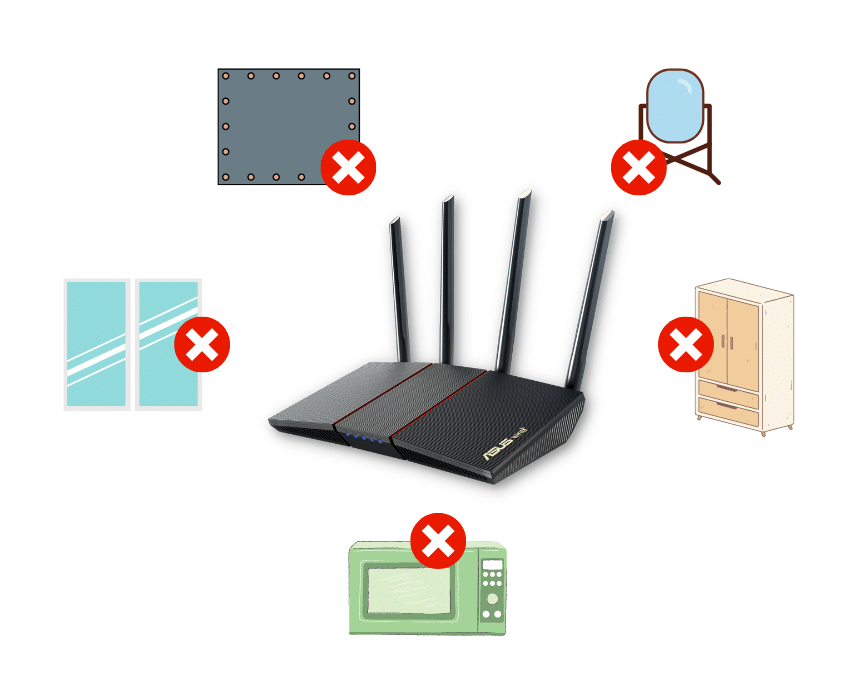
Theoretically, thick concrete walls do not slow down internet signals, rather they reduce signal strength. While your internet signals are capable of passing through walls, other materials make it harder for the signals to pass through.
Here are some materials that block off some signals:
- Metal
- Concrete walls
- Plaster and metal lath
- Ceramic tile
- Windows and tinted glass
- Mirrors
- Drywall
- Furniture
- Appliances and wireless devices
These are the materials that you should keep your routers away from. Otherwise, you’ll experience slower internet speeds and weaker signals at home.
The Bottom Line
Experiencing fast internet with strong signals is a must in every home. Whether you want to do it for free or not, it should meet your current needs for all your online activities.
If it were up to us, the easiest way to boost your internet signal is to use the 2.4 GHz and or use an extender. They’re more efficient and more cost-effective than the other ways mentioned above.
Related Articles:

